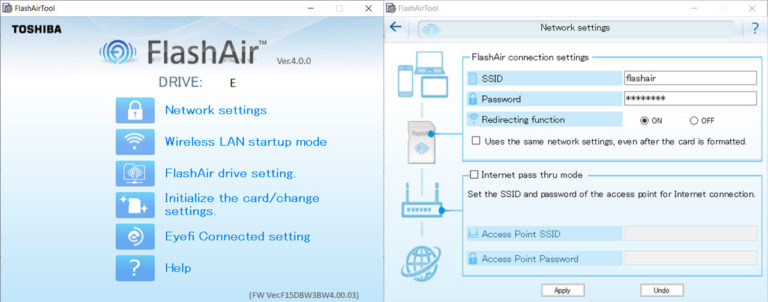
What this means is that a photographer can shoot until their battery runs out while a nearby notebook or WiFi enabled SAN device records the images. Once response is received, delete image from 8 GB SD memory space.Wait for response from paired device that image is saved successfully.If pairing is still intact, upload image to paired device.No, what it means is that you can have a scheme something like: The FlashAir's capabilities mean that when it is installed into any SD card slot it will allow the equipped device to not just upload images, video and data but also for the device to receive that kind of content from smartphones, PCs and cameras that have the FlashAir card installed. Its press release revealed the FlashAir, an 8 GB SDHC memory card that allows for two way wireless connections. A few days ago Toshiba officially announced plans to take this kind of a concept one step further.

These cards, such as the popular Eye-Fi products, are mainly used by cameras in order to transmit pictures and video from the camera directly to a PC or perhaps a online service like Facebook or YouTube. SD storage cards have been released with WiFi support inside for a while now. Toshiba to release two-way WiFi SD card in 2012 The announcement follows the company's work with Trek 2000 to develop a standard for such cards.

All cameras with SD slots will be able to broadcast data from the card, and Toshiba says a number of camera makers are considering launching compatible products that will allow data to be received, too.

The card will be able to share data with compatible cameras, smartphones and WiFi-enabled computers. It also claims lower power consumption than 'other cards with similar functions,' by which you have to assume it means Eye-Fi. It's the first card to fully comply with the SD standard, the company says. Toshiba has announced a WiFi SDHC card that can both transmit and receive data.


 0 kommentar(er)
0 kommentar(er)
